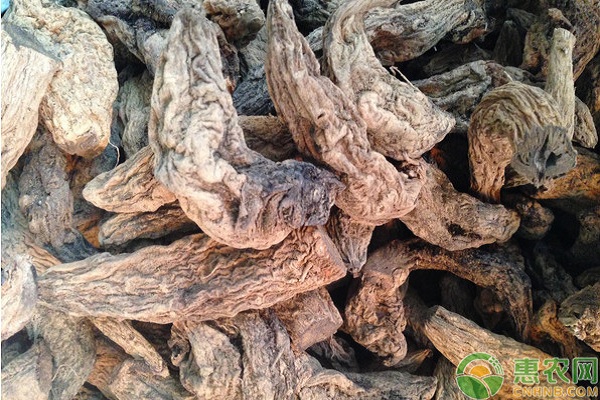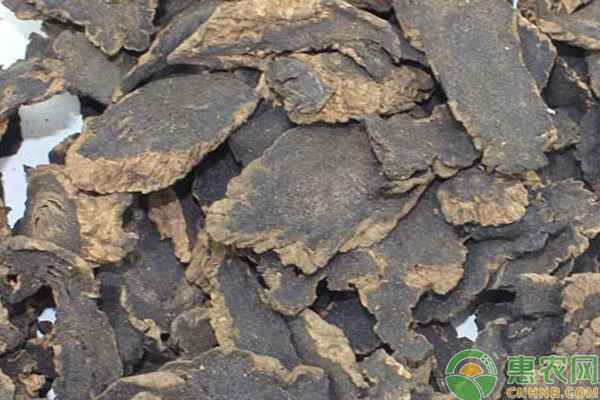In Chongqing, Scrophularia sinensis has an average benefit of more than 2,000 yuan per 667m2. However, there are requirements for the cultivation of Scrophularia sinensis. It is very important to choose land preparation. Specifically, we must grasp the following points: 1 Planting method First choose milky white, thick as thumb, no mildew scars, less side buds, long 3~4cm bud head seeding, first soak with 50% antibacterial 1000 times liquid for 5min, remove and dry, prepare the prepared noodles On the top, the planting distance is 35cm×35cm, and the seeding buds are placed 1~2 at each hole. The bud head is upward, and each hole is grasped with a coke ash, and then the soil is about 5cm. The planting time is from late January to early April. 2 Field management 2.1 Applying growth fertilizer Scrophulariaceae should generally be topdressed 3 times in the growing season. Namely: after Qi Miao, 500~1000kg of human and animal excrement is applied per 667m2 to promote seedling growth; the seedling height is about 35cm, when the growth of Scrophularia sinensis is transferred to the vigorous period, 1000~1500kg of manure per manure is applied, and 1500kg of manure is promoted to promote the ground. The plants are prosperous; in the early flowering stage of Scrophularia sinensis, 50 kg of calcium phosphate and 300 kg of ash are applied per 667 m2 of ditch, and the soil is covered after application to promote the expansion of the roots of Scrophularia. 2.2 cultivating weeding After the seedlings are unearthed, they should be cultivated and weeded in time. Generally, after the first seedling, the second time is in mid-May, and the third time is in mid-June. The cultivating and weeding should not be too deep, so as to loosen the topsoil without damaging the roots. 2.3 Irrigation drainage Because Scrophularia is more drought-tolerant, it generally does not require irrigation. In case of prolonged drought, water can be watered before the morning sun. Drainage is drained during the rainy season to prevent the roots from rot. 2.4 picking buds topping The flower buds are formed in the upper part of the plant to the initial flowering stage. The peduncle should be removed in time to reduce the consumption of nutrients, so as to promote the expansion of the underground roots and achieve the purpose of improving yield and quality. 3 pest control Control methods for spot blight and leaf spot: It is not advisable to plant Scrophularia sinensis in the plots of Atractylodes, Sweet Potato, Peanut, Rehmannia, Radix and other crops in the forefront. In the growing season, we must adhere to cultivating and weeding to promote plant growth and strengthen disease resistance. Ability; pay attention to ditch drainage, reduce field humidity, increase ventilation and light transmission; if the disease occurs, remove the diseased leaves in the early stage, keep spraying 1:1:100 Bordeaux liquid every 7~10d for protection, continuous spraying 3~4 times . In the middle of May, 500~800 times of dexamethasone solution can be sprayed every 10~14d for 4~5 times. Prevention and treatment of chalk disease: rotation with grass crops, avoiding continuous cropping, not rotating crops with susceptible diseases such as Rehmannia glutinosa, Aconite, Radix Paeoniae Alba, Pseudostellariae and peanut; when soil preparation, use 50kg of quicklime per 667m2 to turn into soil for soil disinfection; In the next plant, 50% thiophanate-methyl (or 50% bacteriophage) 1000 times solution was soaked for 5 minutes, then dried and planted; during the field management of Datian, attention should be paid to ditch drainage and ventilation, and low-lying fields should be sorghum. Planting; found that the diseased plants should be removed in time, removed and burned, remove the soil of the diseased hole, and disinfected with lime powder in the diseased and surrounding areas. 5 Harvest processing In the year when Scrophularia sinensis was planted, some of the stems and leaves were plucked when they were withered. The stalk is cut first, then the underground part is dug out, and the rhizome with the bud is selected for the next year. After harvest, the medicinal roots will be dried during the day and piled up at night. After exposure for 6~7d, after the skin is shrunk, put it into a sack or woven bag to make it "sweating", then dry it for 3~5d to be stored or sold. In the case of rain, it can be baked in an electric furnace, and the temperature is controlled at about 40~50 °C, and it is turned at the right time. The product is made of hypertrophy, fine skin, grayish white appearance, black interior, no oil, no reed head. The above is all about the cultivation techniques of Scrophularia sinensis. Everyone who wants to plant Scrophularia sinensis friends will come to Huinong.com to learn! Soy lecithin powder is a substance derived from soybeans that is commonly used as an emulsifier, stabilizer, and thickener in food products. It is a natural source of phospholipids, which are essential components of cell membranes. Soy lecithin powder is often added to chocolate, baked goods, and other processed foods to improve texture and prevent separation of ingredients. It is also used in the production of dietary supplements and pharmaceuticals. Soy lecithin powder is generally considered safe for consumption, although some people with soy allergies may need to avoid it. Soy Lecithin Powder,Soya Lecithin Powder,Soybean Powder,Soybean Lecithin Powder Jiangsu Chenwei Biology and Technology Co. LTD , https://www.cwsoybean.com


High-efficiency planting technique and pest control
